Using Data for Content Strategy: Drive Results in 2025


Businesses are producing more digital content than ever, yet most of it still fails to reach the right audience or deliver tangible results. Here is the surprising part. Brands that use data-driven strategies report up to 5 times higher engagement rates compared to those relying on intuition. The twist is that truly effective content is not about creating more articles or flashy posts, it comes down to understanding exactly what your audience wants through smart data—turning every click and scroll into clear direction for your next big hit.
Table of Contents
- Why Data Matters In Content Strategy
- Key Data Sources And Metrics To Track
- Steps To Build A Data-Driven Content Plan
- Tools For Using Data In Content Creation
Quick Summary
| Takeaway | Explanation |
|---|---|
| Data-Driven Insight is Essential | Businesses must utilize data to understand audience preferences, behavior, and engagement metrics, transforming content strategy from guesswork to precision. |
| Track Key Metrics | Success relies on monitoring critical metrics such as website traffic, user engagement, and conversion rates to ensure content effectively reaches target audiences. |
| Establish Clear Objectives | Defining specific, measurable goals aligned with Key Performance Indicators (KPIs) helps guide content development and performance evaluation. |
| Continuous Performance Monitoring | Regularly reviewing analytics with flexibility in content strategies allows for ongoing adjustments, ensuring content remains relevant and effective. |
| Utilize Advanced Tools | Leveraging analytics, AI-powered generation, and educational tools can enhance the content creation process, helping create targeted and engaging narratives. |
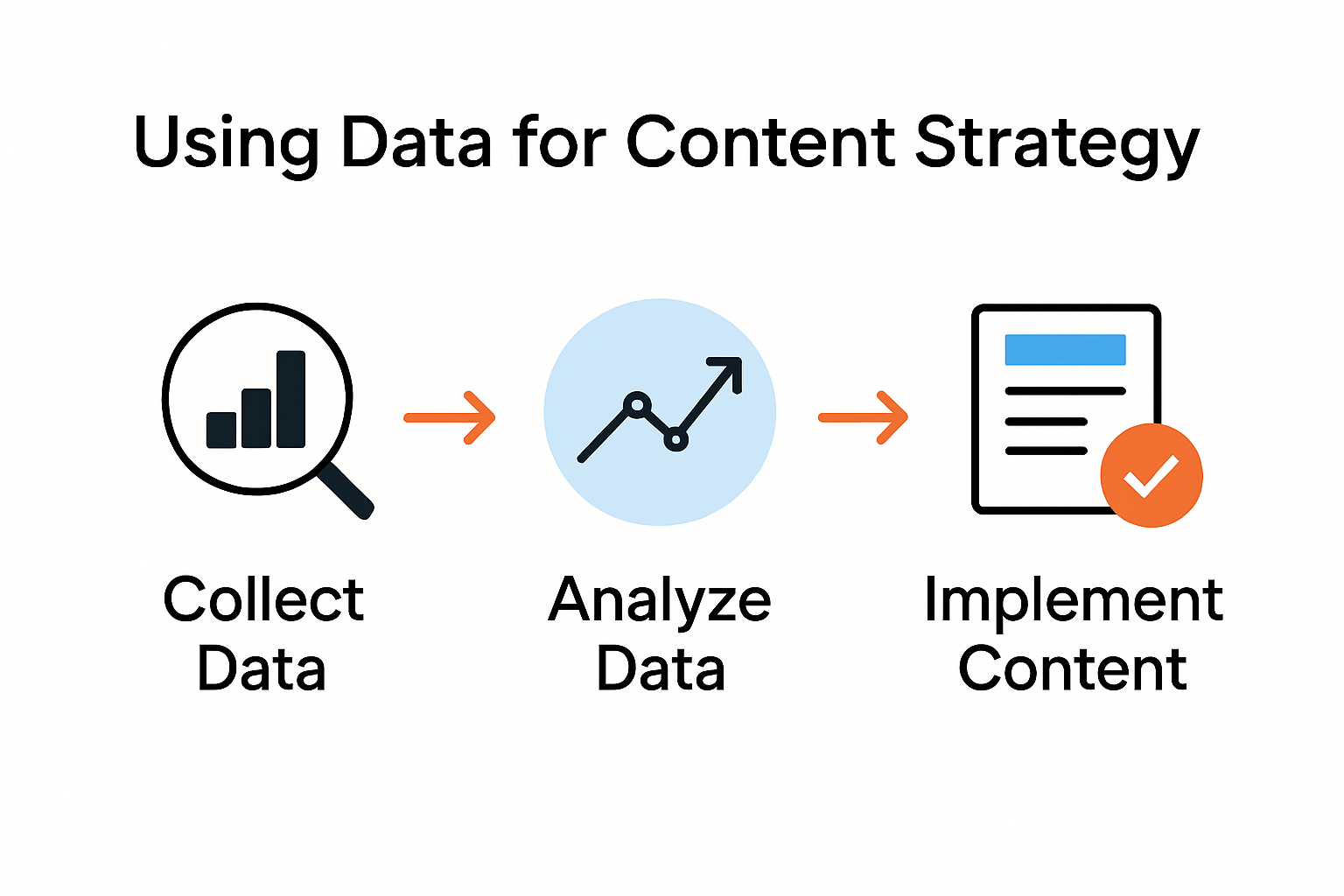
Why Data Matters in Content Strategy
Data transforms content strategy from guesswork to precision. Modern businesses cannot afford to create content blindly. Strategic content development relies on concrete insights that reveal audience preferences, behavior patterns, and engagement metrics.
Understanding Data-Driven Content Insights
Content strategy powered by data provides a systematic approach to understanding what truly resonates with your target audience. According to the University of Kentucky, a robust content strategy must set measurable goals and apply a structured approach to content creation and organization.
Analytics reveal critical information about audience interactions. These insights help businesses:
- Audience Segmentation: Identify precise demographic and behavioral characteristics
- Content Performance: Track engagement rates, time spent on page, and conversion metrics
- User Journey Mapping: Understand how different content pieces influence decision making
The UK's National Occupational Standards emphasize the importance of using analytics to improve digital content effectiveness. This means configuring analytic tools and performing comprehensive website visitor analysis to optimize engagement.
Transforming Data into Strategic Content
Successful content strategies go beyond raw numbers. They translate data into actionable insights that guide content creation. By analyzing user behavior, businesses can:
- Predict content topics that will generate maximum interest
- Understand optimal content formats for different audience segments
- Identify content gaps in current offerings
- Develop personalized content experiences
Data provides the roadmap for creating content that does more than attract attention. It enables businesses to craft narratives that genuinely connect with their audience, driving meaningful engagement and conversion.
With precise data analysis, content becomes a strategic asset. Instead of shooting in the dark, businesses can develop targeted, meaningful content that speaks directly to user needs and preferences. The era of generic, one-size-fits-all content is over. Data-driven strategies represent the future of effective digital communication.
Every click, scroll, and interaction tells a story. Smart businesses are learning to listen and respond with content that truly matters to their audience.
Key Data Sources and Metrics to Track
Tracking the right data sources and metrics is crucial for developing an effective content strategy. Without precise measurement tools, businesses risk creating content that misses their target audience and fails to deliver meaningful results.

Digital Analytics Platforms
Comprehensive digital analytics platforms provide the foundation for understanding content performance. Semrush highlights the critical importance of tracking specific conversion metrics that demonstrate direct business impact. These platforms offer insights into multiple key performance indicators:
- Website Traffic: Total visitors, unique visitors, and traffic sources
- User Engagement: Time spent on page, pages per session
- Conversion Rates: Percentage of visitors completing desired actions
User Interaction Metrics
Data Calculus emphasizes that user engagement metrics provide critical insights into content relevance. Smart content strategists track:- Bounce rate
- Average session duration
- Click-through rates
- Social media shares and interactions
These metrics reveal how audiences interact with content beyond surface-level statistics. Understanding these nuanced interactions helps businesses refine their content approach and create more targeted, compelling materials.
Advanced Performance Tracking
Beyond basic metrics, advanced tracking involves deeper analysis of content performance. This includes:
- Audience segmentation data
- Content consumption patterns
- Demographic breakdown of engaged users
- Comparative performance across different content types
Successful content strategies transform raw data into actionable insights. By systematically analyzing these metrics, businesses can continuously improve their content approach, ensuring each piece of content drives meaningful engagement and supports broader business objectives.
Remember that data is not just about numbers. It tells a story about your audience's preferences, behaviors, and needs. The most effective content strategies listen closely to what these metrics reveal, adapting and evolving to meet audience expectations.
To help summarize the key content metrics and what they reveal, see the table below:
| Metric Type | Examples | Insights Provided |
|---|---|---|
| Website Traffic | Total visitors, unique visitors, traffic sources | Audience size and acquisition channels |
| User Engagement | Time on page, pages/session, session duration | Content relevance and user interest |
| Conversion Rate | Form completions, purchases, sign-ups | Content effectiveness in driving actions |
| Bounce Rate | % leaving after one page | Initial content alignment or disconnect |
| Social Interactions | Shares, likes, comments | Content virality and community impact |
| Audience Segmentation | Demographics, behaviors | Specific user group targeting |
Steps to Build a Data-Driven Content Plan
Creating a data-driven content plan requires a strategic approach that transforms raw information into a comprehensive roadmap for content success. Businesses must move beyond intuition and leverage concrete insights to develop targeted content strategies.
Establishing Clear Objectives
Coursera emphasizes the critical importance of defining clear, measurable goals aligned with specific Key Performance Indicators (KPIs). These objectives provide a strategic framework for content creation and performance tracking. Effective goal setting involves:- Specific Metrics: Define exact measurement criteria
- Realistic Targets: Set achievable benchmarks
- Time-Bound Objectives: Create specific timelines for content performance evaluation
By establishing precise goals, businesses create a North Star that guides content development and provides a clear mechanism for measuring success.
Comprehensive Content Auditing
Coursera recommends conducting a thorough content audit to understand existing content performance. This process involves:- Analyzing current content inventory
- Identifying top-performing pieces
- Discovering content gaps
- Evaluating audience engagement metrics
A meticulous audit reveals patterns in content effectiveness, highlighting what resonates with your audience and identifying areas for strategic improvement.
Continuous Performance Monitoring
Tapereal highlights the significance of ongoing performance tracking. Successful data-driven content strategies require:- Regular analytics review
- Flexibility in content adjustment
- Responsive strategy modifications
- Precise performance measurement
Data-driven content planning is not a one-time activity but an ongoing process of refinement. Each piece of content becomes an opportunity to learn, adapt, and improve your communication strategy.
The most effective content plans treat data as a living, breathing resource. They recognize that audience preferences shift, technological landscapes change, and content strategies must evolve accordingly. By maintaining a dynamic, data-informed approach, businesses can create content that not only reaches but genuinely connects with their target audience.
Remember: A data-driven content plan is your blueprint for strategic communication. It transforms guesswork into a precise, measurable approach to audience engagement.
To clarify the steps in building a data-driven content plan, see the process table below:
| Step | Description | Example Activity |
|---|---|---|
| Establish Clear Objectives | Define KPIs, success metrics, and timelines | Set goal of 20% higher sign-ups |
| Conduct Content Audit | Review and evaluate current content and performance | Identify underperforming blogs |
| Identify Content Gaps | Find missing topic areas or underserved audiences | Note lack of case studies |
| Develop Targeted Strategy | Use data insights to plan new content and improvements | Launch video series for new users |
| Implement and Monitor | Create, publish, and track content performance | Track conversion rates monthly |
| Refine and Optimize | Adjust strategy based on analytics and feedback | Update content based on trends |
Tools for Using Data in Content Creation
Data-driven content creation requires sophisticated tools that transform raw information into compelling narratives. Modern content creators have access to powerful technologies that streamline the process of generating insights and crafting engaging materials.
Analytics and Visualization Tools
DataWeaver represents an innovative approach to content creation, offering an integrated authoring framework that supports visualization-to-text composition. This tool enables professionals to:- Generate narrative content from data visualizations
- Highlight key visual elements
- Create cohesive data-driven stories
Analytics platforms like Google Analytics and Semrush provide comprehensive insights into content performance, helping creators understand audience interactions and optimize their strategies.
AI-Powered Content Generation
DataTales leverages large language models to assist in authoring data-driven articles. These advanced tools help professionals:- Generate textual narratives accompanying charts
- Streamline writing processes
- Produce more consistent content
- Extract meaningful insights from complex datasets
Artificial intelligence technologies are revolutionizing content creation by providing intelligent assistance in data interpretation and narrative development.
Educational and Research Tools
GAIDE demonstrates the potential of generative AI in content development, particularly for educational materials. This framework helps creators:- Develop diverse and engaging content
- Automate complex research processes
- Generate structured educational resources
- Enhance content personalization
These tools represent more than technological innovations. They are strategic assets that empower content creators to develop more sophisticated, data-driven narratives that resonate with audiences.
The future of content creation lies in intelligent integration of data, artificial intelligence, and human creativity. By leveraging these advanced tools, businesses can produce more targeted, insightful, and compelling content that truly connects with their audience.
Frequently Asked Questions
What is a data-driven content strategy?
A data-driven content strategy uses analytics and data insights to inform content creation, helping businesses understand audience preferences and improve engagement.
How can businesses track content performance effectively?
Businesses can track content performance by using digital analytics platforms, monitoring user interaction metrics, and employing advanced performance tracking tools to analyze audience engagement and conversion rates.
Why is establishing clear objectives important in content planning?
Establishing clear objectives helps businesses define measurable goals aligned with Key Performance Indicators (KPIs), ensuring that content creation is purposeful and results-oriented.
What tools can help in data-driven content creation?
Key tools for data-driven content creation include analytics and visualization platforms, AI-powered content generation tools, and educational resources that enhance the ability to create engaging narratives tailored to target audiences.
Transform Data-Driven Insight Into Real Content Growth
If you are struggling to turn analytics and engagement metrics into real business results, you are not alone. The article stressed that many organizations generate content blindly, missing the chance to harness data for strategic planning and stronger audience connections. Achieving precision with your content can feel overwhelming without the right tools and guidance. Imagine being able to track every metric, understand each conversion, and automate your SEO strategy so your content always hits the mark you want.
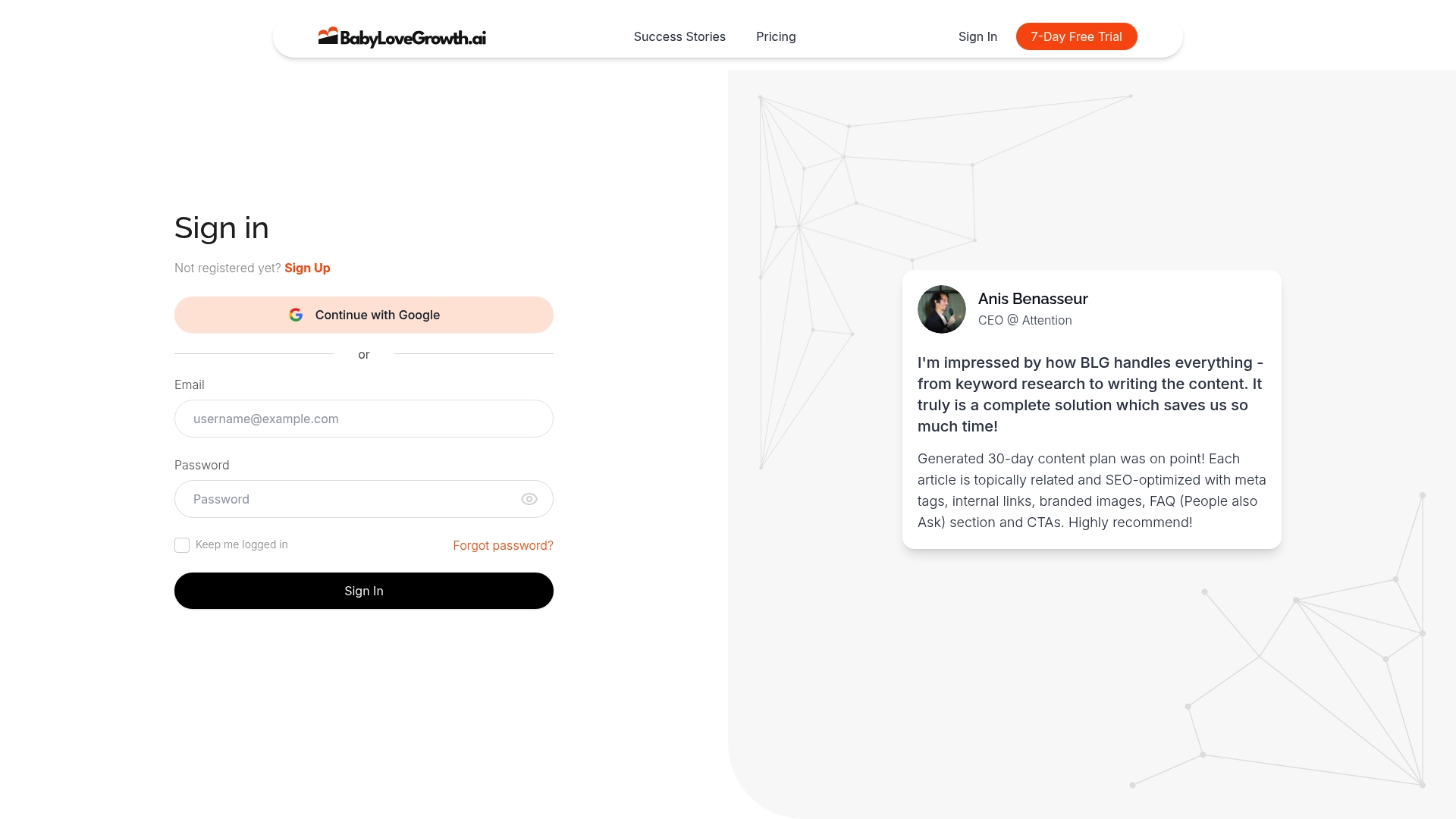
Take the next step and unlock the true power of data-driven content. With BabyLoveGrowth.ai, you can eliminate guesswork for good. Experience how a tailored business analysis and a smart, automated 30-day content plan can elevate your visibility and performance. Do not settle for average results. Give your team the clarity and competitive advantage to get ahead. Start building your winning content strategy at BabyLoveGrowth.ai today.
Recommended
- SEO Trends for 2024: Key Shifts Every Marketer Should Know
- Proven Strategies for Organic Traffic Growth in 2025
- The Importance of Organic Traffic for Business Growth in 2025
- How to Improve Content Interaction: Top Strategies for 2025
- Converting Website Traffic: Proven Strategies for 2025
- Winning SEO Outreach Strategies for 2025: Guide for SMBs
Smart SEO,
Faster Growth!
Most Read Articles
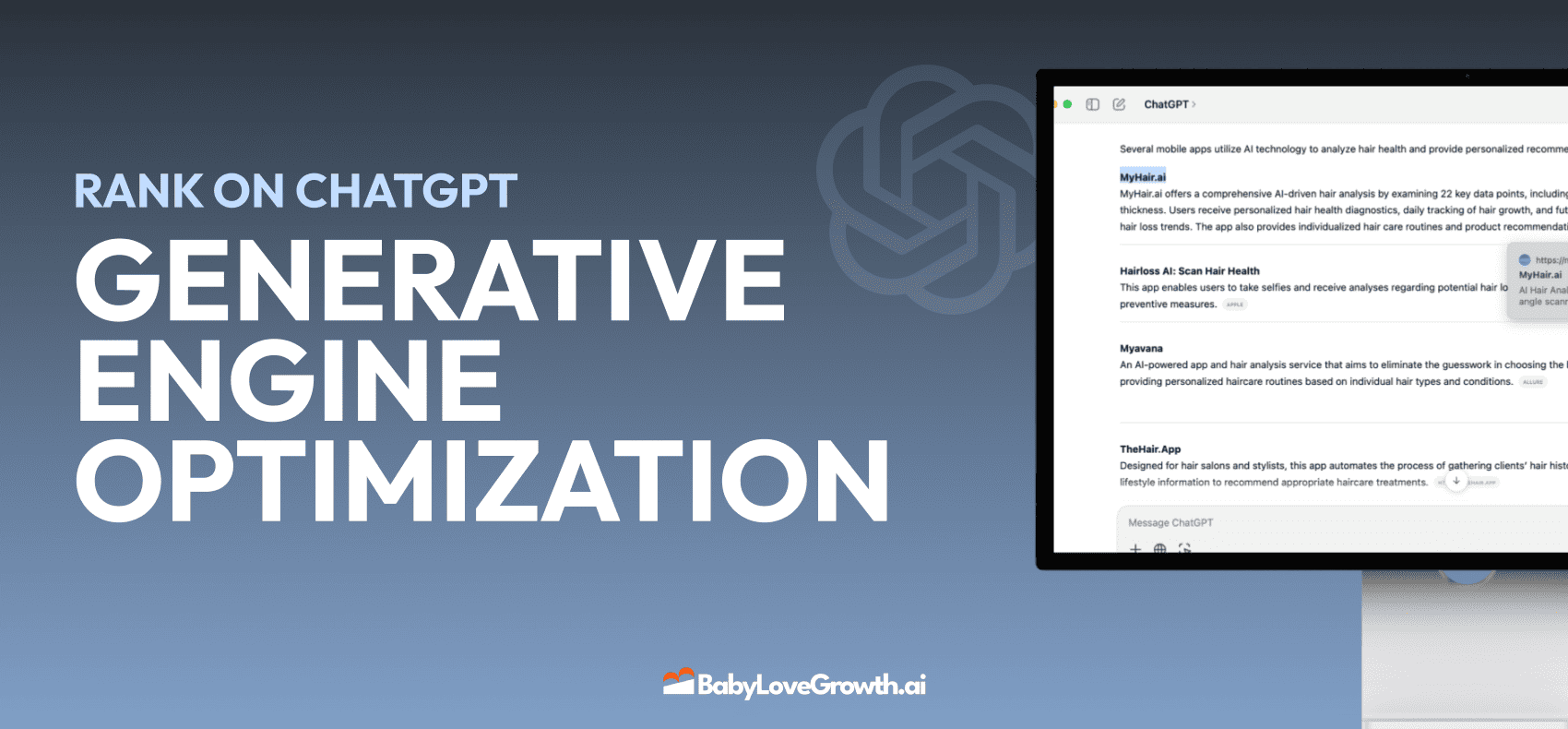
Generative Engine Optimization (GEO)
Learn how Generative Engine Optimization (GEO) helps your content rank in AI search engines like ChatGPT and Google AI. This comprehensive guide explains the differences between SEO and GEO, why it matters for your business, and practical steps to implement GEO strategies for better visibility in AI-generated responses.
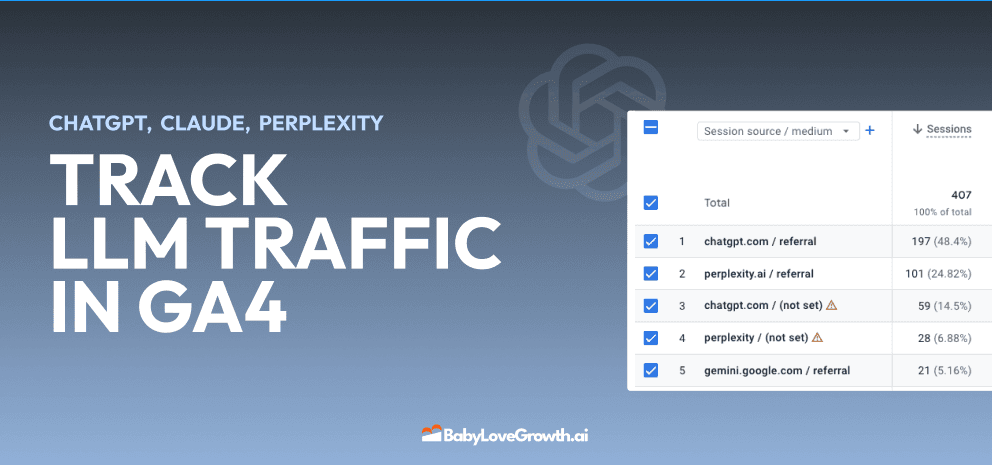
Track LLM Traffic in Google Analytics 4 (GA4)
Learn how to track and analyze traffic from AI sources like ChatGPT, Claude, Perplexity, and Google Gemini in Google Analytics 4. This step-by-step guide shows you how to set up custom filters to monitor AI-driven traffic and make data-driven decisions for your content strategy.
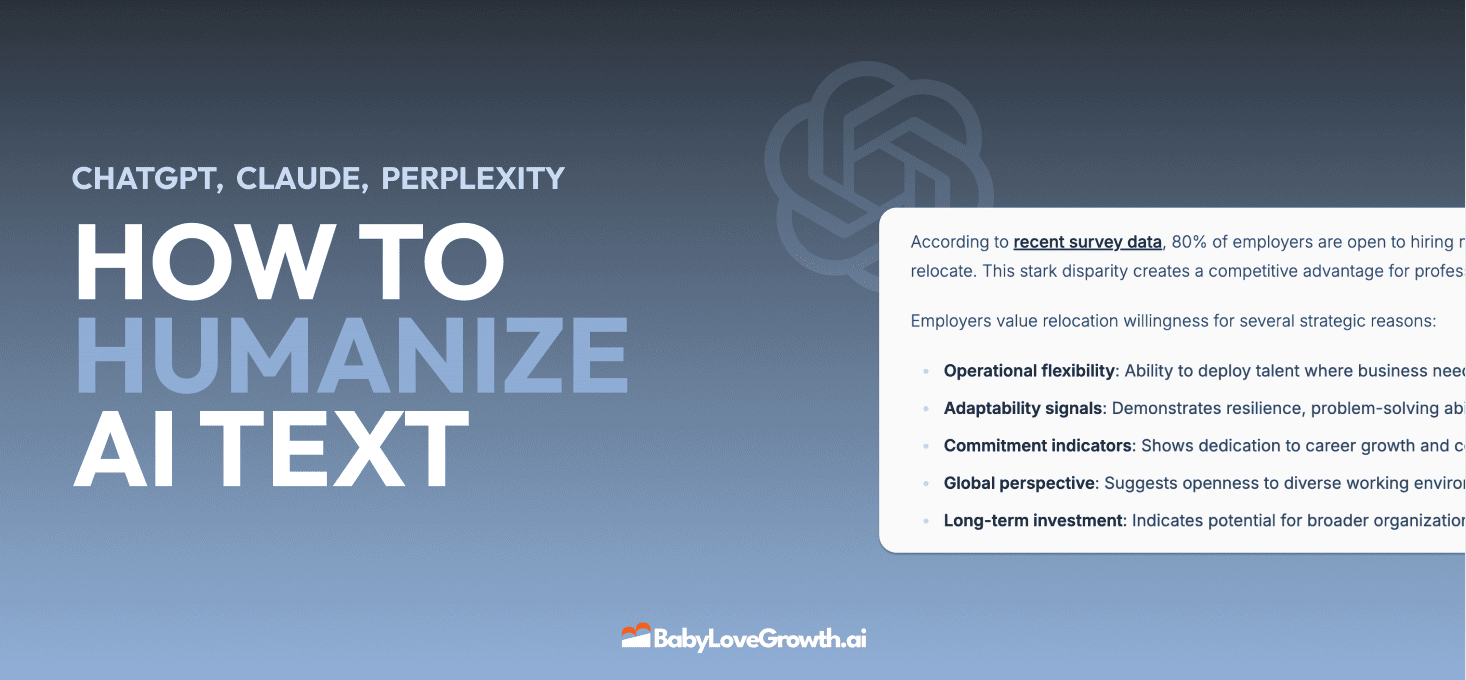
How to Humanize AI Text with Instructions
Learn practical techniques to make AI-generated content sound more natural and human. This guide covers active voice, direct addressing, concise writing, and other proven strategies to transform robotic text into engaging content.
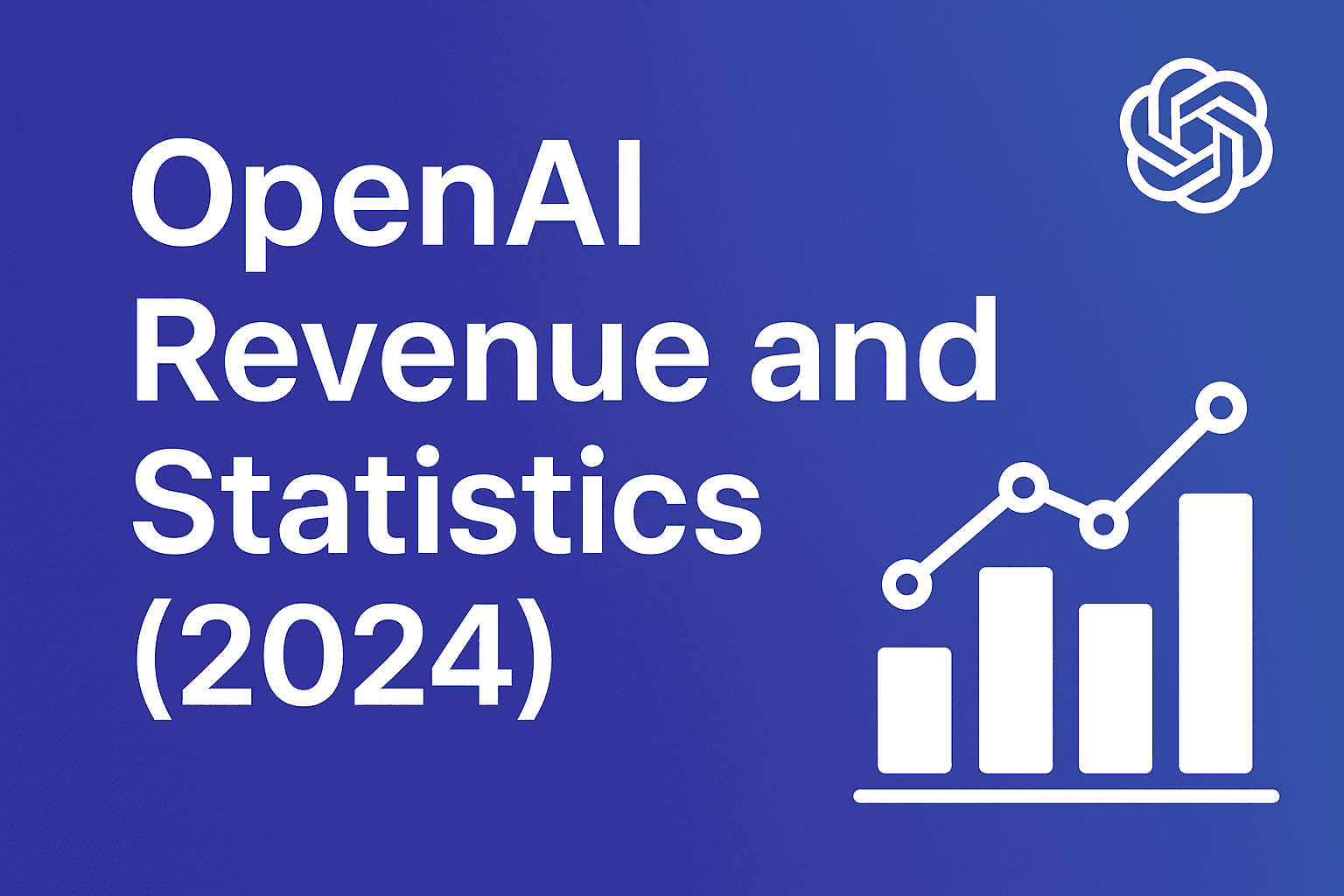
Open AI Revenue and Statistics (2024)
Comprehensive analysis of OpenAI financial performance, user engagement, and market position in 2023. Discover key statistics including $20B valuation, $1B projected revenue, and 100M+ monthly active users.